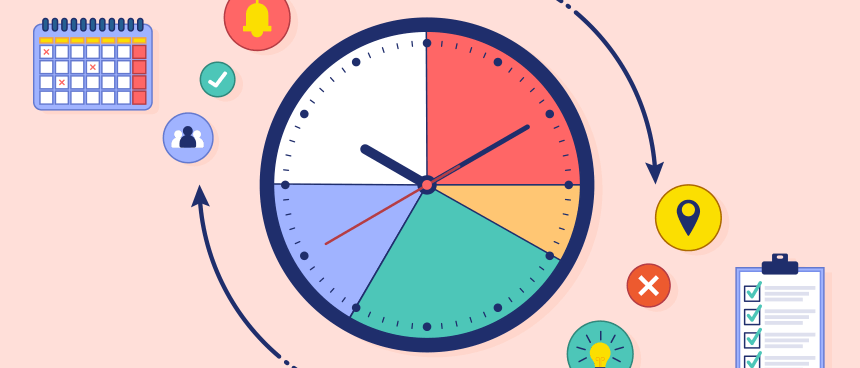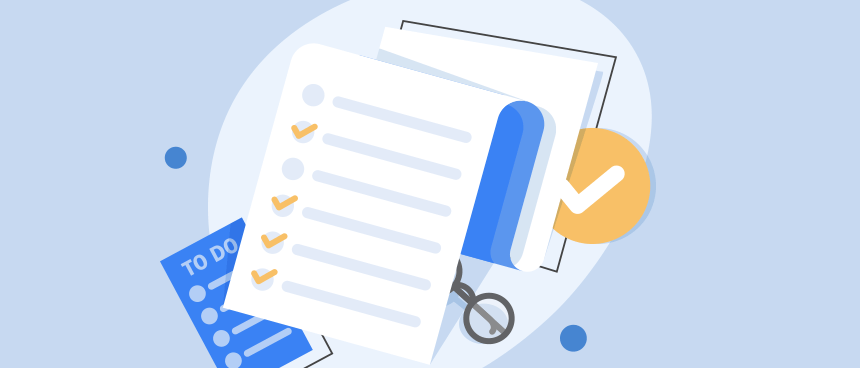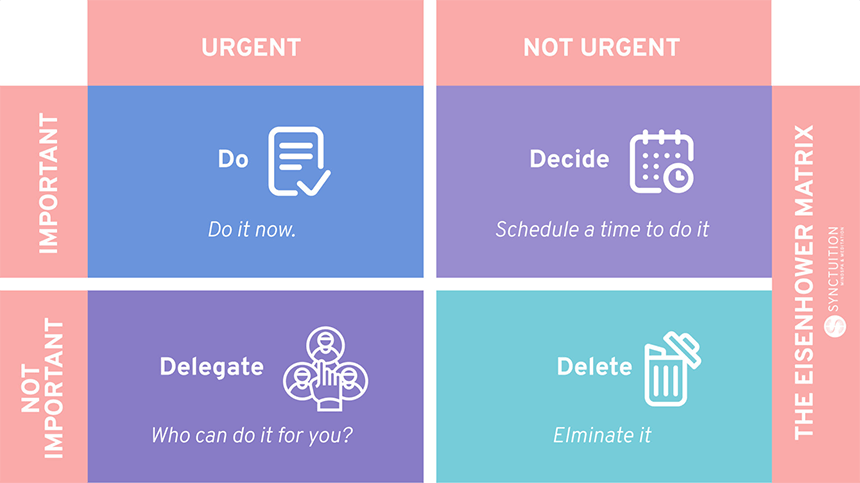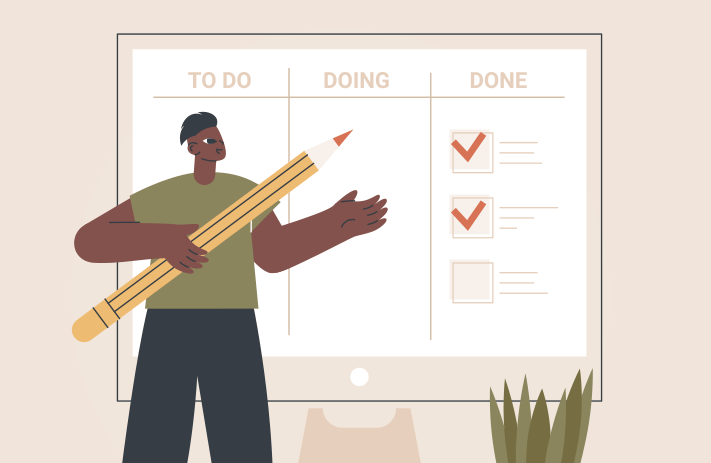
Click the button to start reading
How Can Mindfulness Improve Your Time Management
Time is a highly scarce resource if you think of it. It’s something we always have, but we never have it under control. Our responsibilities often take up a huge amount of our time, making us leave the people and things we care about for later.
Managing time efficiently is something that would help us get the best of these two worlds. Unfortunately, many of us aren’t as good at this as other people.
But worry not—in today’s blog post, we’ll take a closer look at how mindfulness can help you manage your time better, become more efficient at work, and have more time for the things that really matter.
Let’s dive right in.
So, what is mindfulness?
The modern idea of mindfulness stems from Buddhism, where it’s called Satipatthana (the establishment of mindfulness or presence of mindfulness).
However, it’s also important to underline that many other religions have similar concepts that date back many thousands of years.
Fundamentally, mindfulness is a state defined by moment-by-moment awareness of a person’s thoughts, feelings, and bodily sensations. Its main goal is to take control of the mind, remain grounded in the present moment, and not be judgmental about external and internal distractions (i.e., noises, discomfort, irritation, etc.).
As a result of practicing mindfulness, we can learn to stop our minds from wandering off and remain focussed for longer periods of time. It should be pointed out that the practice has a much broader spectrum of benefits, but we’ll focus on these ones for now.

1. Manage your attention
Managing time is most certainly a valuable skill to have but what most of us are missing is the ability to remain focused on and mindful of where we direct our attention. More importantly, if you think of it, “time management” is a very elusive concept. There is very little we can do about time—we can neither stop it nor make it go faster or slower. The thing we should care about most when it comes to productivity is managing attention.
In theory, if you decide to spend three hours on a particular task but your attention continuously drifts elsewhere, it is fair to assume that the whole idea of “time management” is pretty much pointless. That is not to say that carefully planning your time has no value—rather, in order to manage your time properly, we need to stay focused on the task at hand.
2. Do one thing at a time
You’ve probably heard hundreds of people glorifying multitasking by now. It’s always presented as some sort of gift that helps people tackle the overwhelming nature of life. Well, the truth is that multitasking is, in the vast majority of cases, unproductive and taxing on our brains, since we can’t really focus on multiple things at a time. What’s really happening is the alternation of tasks—which is the opposite of managing your attention.
To many, this may appear as a shocker, but there’s plenty of research that backs up the fact that you’re better off doing one thing at a time. Researchers at the University of Sussex published a study back in 2014 called “Higher media multitasking activity is associated with smaller gray-matter density in the anterior cingulate cortex.” The research indicates that people who tend to multitask on a regular basis have decreased brain density in the anterior cingulate cortex, which controls things like compassion and emotional control. You heard it right—we pretty much physically damage our brains by choosing to alternate between tasks.
But there’s more! Other studies suggest that aside from slowing you down and damaging your brain, multitasking can have a significant effect on your IQ. Research published by researchers at the University of London found subjects who alternated between tasks have experienced a decline in IQ of about 15 points, which is obviously undesirable if your job revolves around complex tasks.
Multitasking may appear efficient on the surface, but there’s very little real value to it. The only exception will be if you’re working on stuff that isn’t really demanding, like cleaning up or cooking.
Opt for a mindful approach towards your work and choose to do one thing at a time and remain mindful of what you’re doing. A good way out of the mindlessness of multitasking would be an effective prioritization of your tasks, which brings us to our next point.

3. Prioritize tasks
Just like multitasking, task prioritization has been very popular when it comes to enhancing your productivity. The big difference between them is that the latter actually works. Having a sense of clarity in regards to the things you have to do is something that will allow you to remain mindful throughout your workday. Lacking structure will only overwhelm and distract you in the long run, forcing your mind to split into different directions.
There are plenty of techniques that will help you structure your workday that range from a series of basic questions to things like the Eisenhower Matrix. Feel free to explore a variety of them to see what works best for you.
So, let’s start with a few basic questions you can ask yourself before you start your workday:
So, let’s start with a few basic questions you can ask yourself before you start your workday:
- What are the critical and urgent tasks I need to address today?
- What can wait until tomorrow?
- What tasks are simply not worth my time?
Asking these questions will significantly impact your efficiency and mindfulness throughout the day.
For a more slightly structured approach you can use the Eisenhower Matrix, which is a really cool framework that will help you structure your tasks in four categories: Do, Decide, Delegate, and Delete. Here’s how it looks:

All you have to do to use this matrix is establish which tasks are urgent and important, not urgent and important, urgent but not important, not urgent and not important.
4. Minimize interruptions
While not mixing tasks up is beneficial for your mindfulness and focus, it’s also essential to eliminate distractions from your workflow and work environment. While it appears like a straightforward task, it’s fair to say that it’s not really that easy to do. Things just happen—calls, emails, meetings, chat messages, all of these can significantly impact your productivity.
Unfortunately, society has normalized being available all the time, and turning your notifications off sounds pretty scary at first—but you should definitely look into it. There are various degrees to which you can mute your notifications; you can do so temporarily and permanently. Typically, people start with the former and transition into the latter.
Start by just turning your “Do not disturb” mode on. Pretty much all modern smartphones have this feature, and many allow users to customize it extensively. You can tweak your phone settings so that only specific people can call and message you when this mode is on, giving you plenty of flexibility.
Another option would be just keeping your phone away—it does seem like a very simple thing to do, but it works wonders on your focus. When people see their phones, this on its own is enough to lure them into checking messages or scrolling feeds—we don’t want that. So consider keeping your phone away and checking it once in a few hours if there’s an actual need for it.
Another super important point is blocking access to certain sites on your computer, temporarily or permanently—that’s totally up to you. There’s plenty of software that can temporarily block your access to the sites of your choice, but you can also do that in any operating system on your own, although it does demand a bit of research and messing around with terminals and whatnot. Whatever you choose to do, you’ll definitely feel a significant change in your productivity and focus.
5. Start your day with meditation
Before we get into the topic of meditation, we need to mention that this is by no means a religious practice. Many mistakenly assume that to meditate, you’ll have to study Buddhist scripture and other things. While meditation does stem from religion (Christianity, Islam, Judaism, Hinduism, along with a variety of other religions that have had practices that resemble Buddhist mindfulness meditation), for many, it remains a secular activity—and it’s pretty easy to get into. This is exactly why guided meditation apps and recordings are so popular all over the world.
More importantly, people can meditate everywhere. Some choose to do it at home, and others prefer doing it during bus rides in the morning. This small 15-minute investment will make a huge difference. By meditating regularly, you’ll be able to:
- Reduce stress: When we’re under pressure, our bodies produce a hormone called Cortisol, which is associated with states of anxiety, hostility, clouded thinking, high blood pressure, and more. Meditation helps reduce Cortisol levels, which in turn helps you be more grounded and calm throughout your workday, ensuring that you’ll remain focused and undistracted.
- Boost your creativity: We mentioned that an important part of mindfulness meditation is leaving judgment behind. Creativity relies on a person’s openness to new thoughts and solutions that would otherwise be discarded.
- Calm down the mind: By meditating regularly, a person learns to direct their attention and take control over their emotional impulses. A calm mind helps people remain concentrated and productive throughout the day.
- Improve awareness of the self: Meditation is a great tool when it comes to sharpening self-awareness, as a result enabling us to be aware of our emotions and physical state. This enables us to gain better self-control, which in part promotes a sense of confidence and equanimity.
6. Be consistent
Mindfulness comes in degrees, and to reap most of its benefits, we need to practice it regularly—it’s what really makes it work. A good way to think of mindfulness-induced productivity and focus is that it’s like a muscle. You may enjoy some small benefits pretty quickly, but the longer you train your mind to stay concentrated, the better it will perform over time, making you more productive than you ever were.
Another truth about meditation is that it’s better to practice it five minutes a day than an hour once a week. For instance, Amy Blankson from the Institute of Applied Positive Research conducted a very interesting study with Google’s most recent hires. During the study, the people that had joined the company had to meditate for two minutes a day and write down messages of gratitudes in private journals. As a result of this seemingly small intervention, the new hires were more engaged and productive.

A few mindfulness exercises you can try
Now that we’ve explored the reasons why a mindful approach towards work and time management is worthwhile, let’s take a quick look at a few techniques you can start with.
1. The body scan
This is a fairly simple mindfulness exercise that requires no props or prior experience—perfect for beginners.
- Step 1: Lie on your back and find a comfortable position. Ideally, your palms should be facing up, and your legs should be slightly apart, but that’s not essential—do whatever works for you. If you don’t feel like lying down or you want to do this while commuting, you can do this in a sitting position.
- Step 2: It’s important to be still during the exercise. However, if you feel any unpleasant sensations due to your position, feel free to change them, but do it slowly and mindfully.
- Step 3: Bring your attention to the breath. Notice the rhythm in which you breathe. Focus on the qualities of the breathing experience—like the fact that it’s cold when you inhale and warm when you exhale. Your breath should remain at the center of your attention. If you feel like your mind is wandering off, gently bring your focus back to your breath.
- Step 4: Next, shift your attention to your body—observe the sensation in your body, focus on how your clothing feels against your skin, the temperature of your body, and so forth.
- Step 5: Identify parts of your body that feel sore, tense, relaxed, or in any other way. You can do this exercise for as long as you please. Typically, 10 minutes should be enough to feel relaxed and aware.
2. The observer meditation
This mindfulness exercise helps us detach from our thoughts and feelings and is especially useful when we’re stressed, frustrated, or anxious. It’s very useful when you’re trying to put some distance between who you are and some unpleasant or problematic things in life that might be making you unhappy.
- Step 1: Take a comfortable position seated or lying down.
- Step 2: Let your attention rest on your body. Observe how you feel.
- Step 3: Let go of any thoughts that have been bothering you throughout the day.
- Step 4: Shift your attention towards the room you’re in. Imagine being an observer standing outside the room. Then shift your attention back to yourself sitting in the room.
- Step 5: Alternate between these two states for a few minutes.

3. The 3-step mindfulness exercise
This is a very quick exercise you can do virtually anywhere to help you restore a sense of mindfulness. You don’t necessarily have to be seated or lying down for this exercise.
- Step 1: Take a deep breath and bring your attention to what you’re doing right now. Be mindful of how you feel at this moment.
- Step 2: Shift your focus towards your breath. Try to establish a continuous focus on every inhalation and exhalation. Be mindful of how your body is moving while you’re breathing—how your chest rises and falls, how your stomach compresses and expands.
- Step 3: Shift your attention outward. Bring awareness to your entire body. Try to distinguish the sensations you’re feeling in various parts of the body—tightness, aches, lightness, whatever it is.
When you are ready to finish the exercise, open your eyes slowly and try to carry that mindfulness with you as you go about your day.
The bottom line
Managing time is a fairly complicated thing to do, and it’s possible that the problem stems from the misunderstanding that we can actually manage time to our liking. What we should do instead is achieve a certain element of control over our attention and awareness.
















